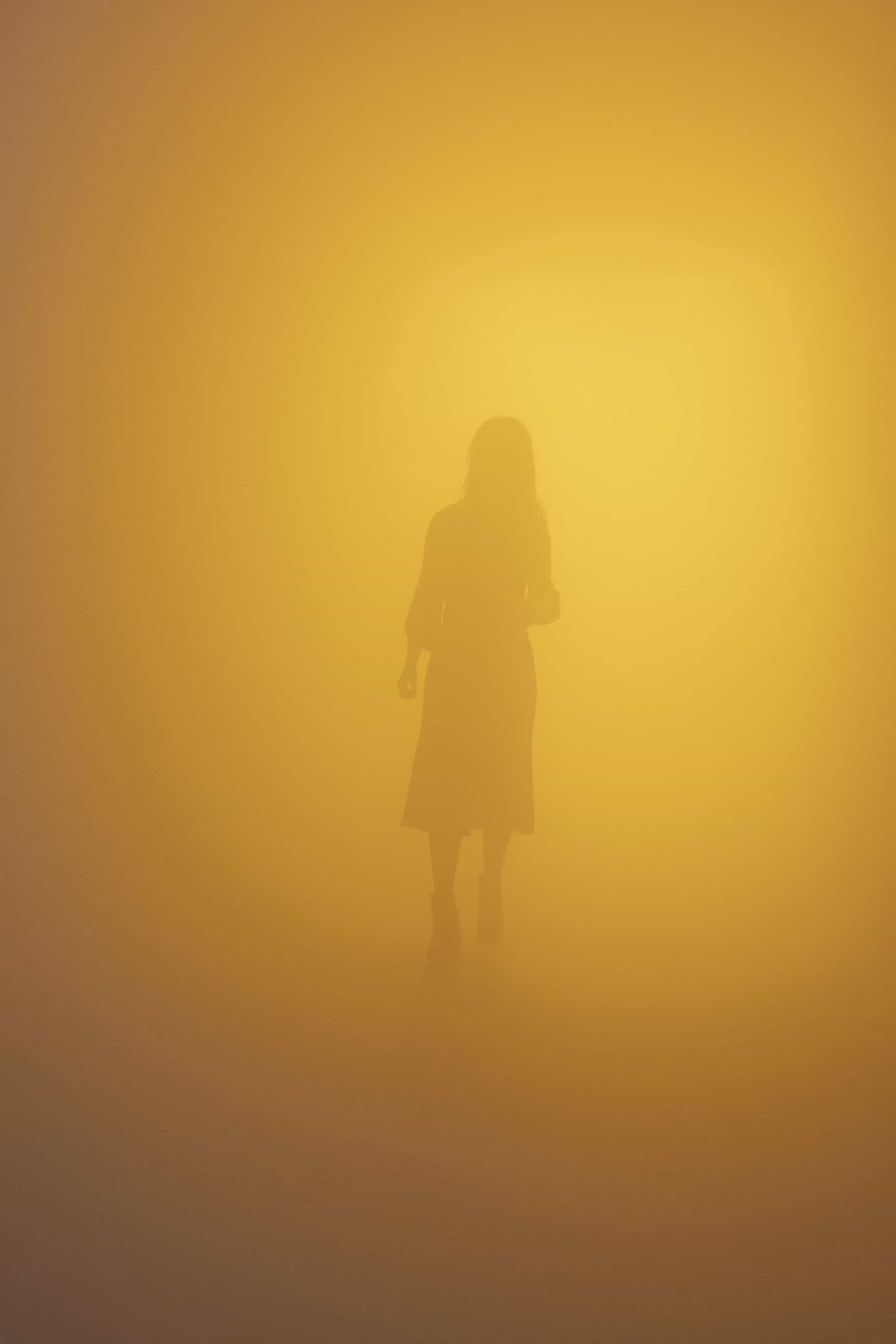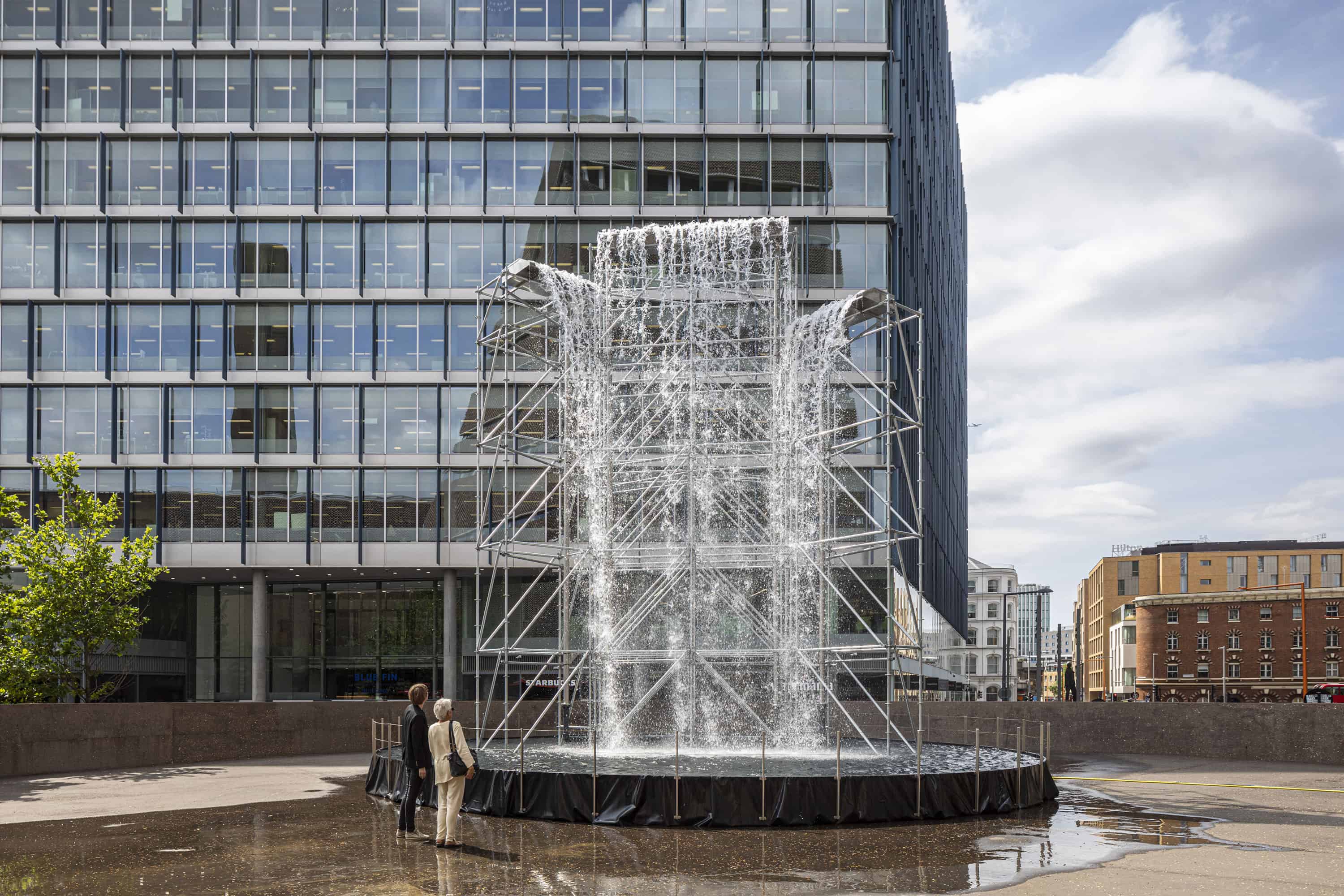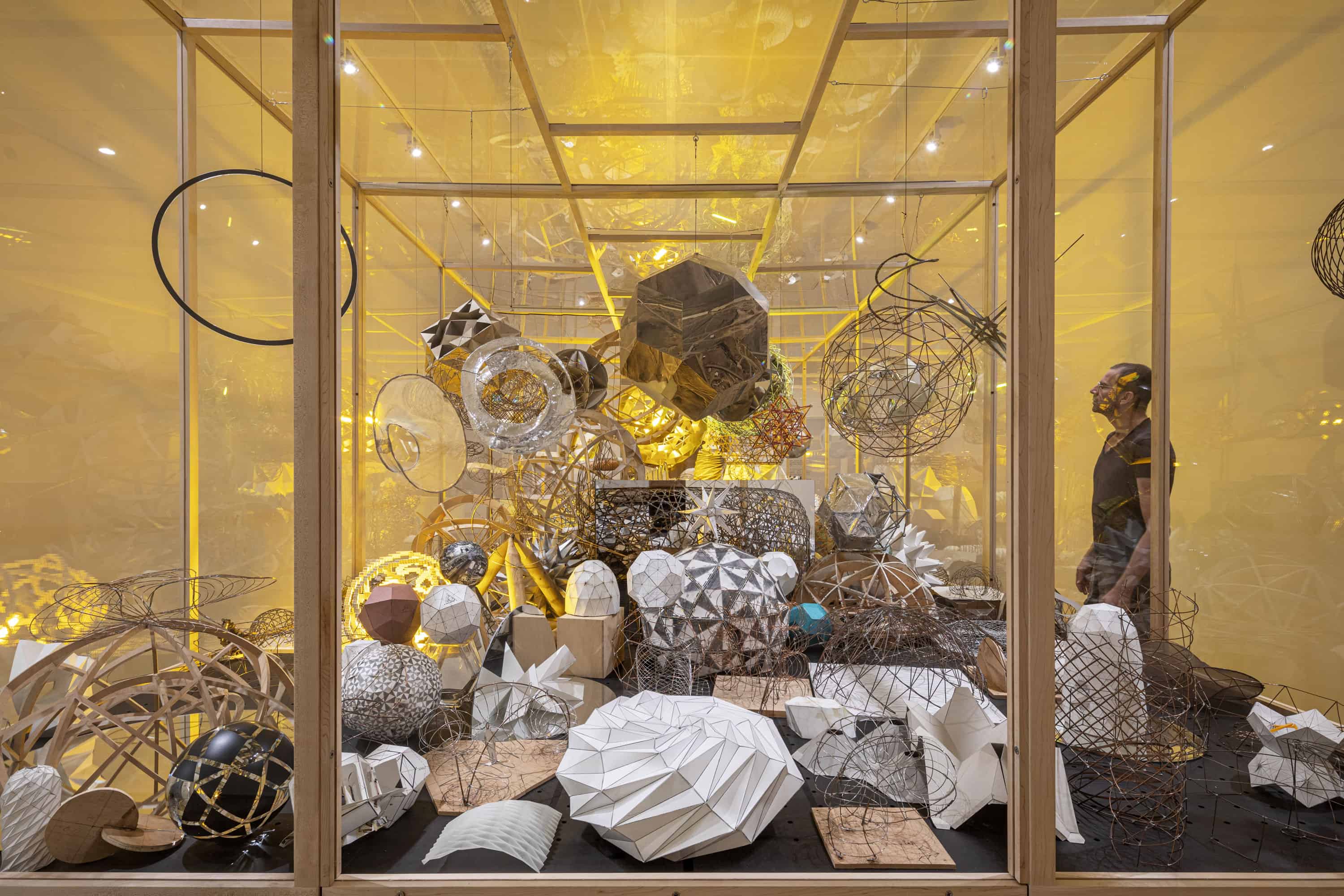Olafur Eliasson’s the “Weather Project”(2003) was a huge success, that not only made Eliasson famous but also left us, the viewers, hungry for more. It has changed the way we perceive art and what we can expect from it. Does his latest exhibition manage to feed our appetite?

Olafur Eliasson
Eliasson’s show is a massive project for Tate. His semi-retrospective is accompanied by a public programme, focused on sustainability and community – two important topics in the work of this Danish-Icelandic artist. Alongside the programme are practical workshops and there is even a restaurant in which you can feel like one of Eliasson’s studio members, at least for a while, eating vegetarian dishes made with organic ingredients.
The exhibition starts when you get out of the lift, with the “Room for one colour” installation that is made out of lamps emitting yellow light. The colour used here makes us feel uncomfortable. Yellow, usually associated with happiness, energy and optimism, here is rather unsettling and dazzling.

Olafur Eliasson, Room for one colour, 1997, Monofrequency lamps, Dimensions variable, Installation view at PinchukArtCentre, Kiev, 2011, Photo: Dmitry Baranov, Courtesy of the artist; neugerriemschneider, Berlin; Tanya Bonakdar Gallery, New York / Los Angeles, © 1997 Olafur Eliasson
The bile-like colour forces us to go to another room as soon as possible – to the space which is also the opening space of the exhibition. Filled with prototypes, models and different geometric forms, it seems like we are about to start a science lesson, or accidentally landed somewhere in the physics department.
Next, we have the “Moss wall”, which is supposed to change colour if watered, and a few other pieces made by the artist in the 90s. As we wander around the rooms filled with Eliasson’s works, we finally arrive at “Your blind passenger”, the highlight of the whole show. The work, made in 2010, is a fully immersive masterpiece. Would you like to experience what an immersive art feels like? Then look no further, you’re in the right place. And if you’re lucky enough, you won’t even have to queue to do this!

Olafur Eliasson, Din blinde passager (Your blind passenger), 2010, Fluorescent lamps, monofrequency lamps (yellow), fog machine, ventilator, wood, aluminium, steel, fabric, plastic sheet, Dimensions variable, Installation view: Tate Modern, London, 2019, Photo: Anders Sune Berg, Courtesy of the artist; neugerriemschneider, Berlin; Tanya Bonakdar Gallery, New York / Los Angeles, © 2010 Olafur Eliasson
“Your blind passenger” is a 39 metres long tunnel filled with fog. It’s beautiful, it’s breathtaking, it’s like nothing you’ve seen before. The way you experience Eliasson’s work depends on whether you see it with someone or alone. I recommend going there by yourself, as the experience seems to be even more intense. As soon as you lose sight of people standing in front of you, you’re on your own, probably wandering your hands on the wall to get to the exit safely.
“Your blind passenger” is a sublime experience. Beautiful and scary at the same time. And it makes the whole show. Without it, Olafur Eliasson’s “In Real Life” exhibition would be a real-life Instagram heaven where each of the artworks asks for a picture. Is there more to Eliasson’s work than that? There probably is… For now, I’m happy with what I saw and experienced in his fog tunnel. It was all sweetness and light, so maybe the future won’t be so dark after all?

Olafur Eliasson, Waterfall, 2019, Scaffolding, water, wood, plastic sheet, aluminium, pump, hose, Height 11 metres, diameter 12 metres, Courtesy the artist; neugerriemschneider, Berlin; Tanya Bonakdar Gallery, New York / Los Angeles, Installation view: Tate Modern, London, Photo: Anders Sune Berg, © 2019 Olafur Eliasson

Olafur Eliasson, Big Bang Fountain, 2014, Water, strobe light, pump, nozzle, stainless steel, wood, foam, plastic, control unit, dye, 1650 x 1600 x 1600 mm, Installation view at Moderna Museet, Stockholm 2015, Photo: Anders Sune Berg, Courtesy of the artist; neugerriemschneider, Berlin; Tanya Bonakdar Gallery, New York/Los Angeles, © 2014 Olafur Eliasson
Olafur Eliasson in collaboration with Einar Thorsteinn, Model room, 2003, Wood table with steel legs, mixed media models, maquettes, prototypes, Dimension variable, Installation view: Tate Modern, London, Photo: Anders Sune Berg, Moderna Museet, Stockholm. Purchase 2015 funded by The Anna-Stina Malmborg and Gunnar Höglund Foundation, © 2003 Olafur Eliasson
Olafur Eliasson in collaboration with Einar Thorsteinn, Model room, 2003, Wood table with steel legs, mixed media models, maquettes, prototypes, Dimension variable, Installation view: Tate Modern, London, Photo: Anders Sune Berg, Moderna Museet, Stockholm. Purchase 2015 funded by The Anna-Stina Malmborg and Gunnar Höglund Foundation, © 2003 Olafur Eliasson








